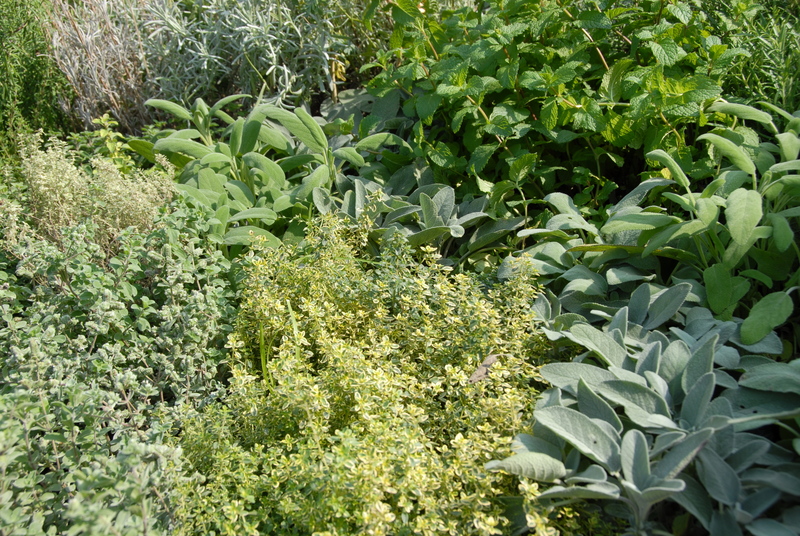Tried-and-True Techniques for Complete Tree Stump Removal
Tree stump removal is a crucial aspect of maintaining a clean and safe landscape after a tree has been cut down. A lingering stump can not only spoil the aesthetics of your yard but also pose safety hazards, attract pests, and hinder future landscaping projects. In this comprehensive guide, we explore the most effective, tried-and-true techniques for removing tree stumps entirely, including manual, mechanical, and chemical methods. Whether you're hoping for DIY tips or seeking expert insight, this article offers everything you need to know about tree stump removal.
Why Tree Stump Removal Is Essential
Before delving into the techniques, it's vital to understand why removing tree stumps is important:
- Safety: Stumps can be tripping hazards, especially for children and elderly individuals.
- Pest Control: Rotting stumps often attract insects such as termites, beetles, and ants.
- Landscaping: Leftover stumps can obstruct future planting or construction plans.
- Disease Prevention: Decaying wood can harbor fungi and diseases that may spread to other healthy plants.
- Enhanced Aesthetics: A yard free from old stumps looks neater and more inviting.

Understanding the Basics: What Determines the Best Tree Stump Removal Method?
Not all tree stumps are the same. The best removal approach depends on several factors:
- Size and age of the stump
- Type of tree (hardwood stumps like oak are tougher than softwood)
- Root system depth
- Location in the yard
- Accessibility for equipment
- Budget constraints
Considering these elements will help you determine the most suitable stump removal solution for your needs.
Manual Tree Stump Removal Techniques
1. Digging Out the Stump
Manual removal is ideal for small to medium-sized stumps, especially ones with shallow root systems. Here's a step-by-step guide:
- Gather Necessary Tools: You will need a sturdy shovel, pry bar, axe, mattock, and a small saw.
- Expose the Roots: Use the shovel to remove loose soil around the base of the stump, exposing the underlying roots.
- Cut and Sever Roots: With an axe or saw, sever the main roots attaching the stump to the ground.
- Pry the Stump Free: Once most roots are cut, leverage the stump out of the hole with a pry bar.
- Refill the Hole: Replace soil and tamp it down to prevent future sinking.
This process can be labor-intensive, but it's a reliable and chemical-free way to achieve complete stump removal.
2. Using a Winch
For heavier stumps or those in awkward spots, a hand or vehicle winch can provide the extra muscle needed.
- Dig around the stump and cut major roots; attach a chain to the stump and winch, and gradually pull it out.
- Ensure the winch is anchored to a solid, immovable object for safety.
Warning: Take necessary safety precautions when using mechanical force, as cables under tension can snap.
Chemical Tree Stump Removal
3. Stump Decomposition via Chemicals
If manual removal is not feasible, chemical methods offer a less labor-intensive alternative for decaying and softening stumps over time.
- Drill several deep holes into the surface and sides of the stump. Use a 1-inch bit to penetrate as deep as possible.
- Fill the holes with a stump removal chemical or high-nitrogen fertilizer. Products often contain potassium nitrate to speed up decomposition.
- Soak the area with water to activate the chemicals and cover the stump with a tarp to retain moisture.
- Within weeks to months, the stump will become soft, spongy, and easier to break apart with an axe or burn safely.
Advantages:
- Minimal physical effort required
- Ideal for stubborn, large stumps
- Cost-effective
Limitations:
- Time-consuming process (can take several months for complete decay)
- Chemicals may affect nearby plants if not applied with care
- Some chemicals are not eco-friendly; always follow label instructions and local regulations
Mechanical and Professional Stump Removal
4. Grinding Tree Stumps
The most popular and efficient method among professionals for tree stump extraction is stump grinding. Here is how the process works:
- A specialized stump grinder machine with a rotating cutting disk is positioned over the stump.
- The machine grinds the stump down into wood chips, usually 6-12 inches below ground level.
- The remaining hole is filled with wood chips and soil.
Benefits of Stump Grinding:
Considerations:
5. Excavation and Heavy Equipment
For commercial properties or when dealing with very large or multiple stumps at once, excavators or backhoes are the solution:
- Heavy machinery uproots the stump and the root ball entirely.
- Best suited for construction sites or areas where landscape disruption is not an issue.
Eco-Friendly and Natural Stump Removal Approaches
6. Burning the Tree Stump
Burning is another classic method, especially in rural areas where permissible:
- Drill several holes into the stump and fill with kerosene or fuel oil (never use gasoline).
- Allow the fuel to soak in for a few days.
- Light the stump on fire, ensuring safety measures are in place (fire extinguisher, hose, local fire regulations).
- Monitor the fire until the stump is reduced to ashes.
Tip: Check with your local fire department before burning, as some areas prohibit open burning.
7. Accelerating Natural Rot
For the patient and eco-conscious, accelerated decomposition uses household methods to break down the stump:
- Keep the stump moist and cover it with organic material, such as compost or manure, to stimulate microbial activity.
- Drill holes to facilitate moisture penetration and encourage insects and fungi.
- Reapply materials periodically and allow nature to take its course, which may take several years for large stumps.
DIY Tree Stump Removal: Safety Tips
While DIY stump removal can be rewarding, it's essential to stay safe and prepared:
- Wear protective gloves, goggles, and boots at all times.
- Inspect for hidden utilities (gas, water, electrical lines) before digging.
- For large or hazardous jobs, consider hiring a professional stump removal service.
Aftercare: What to Do Once the Stump Is Gone
Post-removal, the ground where the stump sat often requires attention:
- Fill in the hole with quality soil and tamp down to avoid sinkholes.
- Consider planting grass, shrubs, or new trees in the cleared space.
- Monitor for any signs of root regrowth or fungal activity and address promptly.
Comparing Stump Removal Techniques: Which One Is Right for You?
| Technique | Best For | Timeframe | Cost | Pros | Cons |
|---|---|---|---|---|---|
| Manual Removal | Small, accessible stumps | Hours to days | Low | No chemicals, satisfaction | Labor-intensive |
| Chemical Decomposition | Old, large, tough stumps | Weeks to months | Low to moderate | Minimal labor | Slow, may impact other plants |
| Stump Grinding | Most stumps, especially hard/large | 1-2 hours per stump | Moderate to high | Fast, effective | Requires rental or pro service |
| Burning | Rural, regulated areas | 1-2 days | Low | Low cost, efficient | Fire risk, legal restrictions |
| Excavation | Large/Multiple stumps, construction | Hours | High | Complete removal | Costly, landscape disturbance |
| Natural Rot | Eco-friendly, no urgency | Months to years | Very low | Natural, cost-free | Very slow process |

Frequently Asked Questions About Tree Stump Removal
How long does it take to remove a tree stump?
The timeframe depends on the chosen technique:
- Manual removal: Several hours for small stumps
- Stump grinding: One to two hours per stump
- Chemical methods: Several weeks to several months
- Burning: Up to a day, depending on stump size
- Natural rot: Several months to years
Will a ground stump regrow?
Most stumps, especially after grinding or excavation, will not regrow. However, certain species (like willows, poplars, and elms) may send up new shoots from the remaining roots if not entirely removed or treated with herbicide.
Is it better to remove a tree stump or leave it?
Removing the stump is generally recommended for safety, pest control, and landscape versatility. Left alone, stumps can become eyesores, trip hazards, and a home for insects or fungi.
How much does professional tree stump removal cost?
Cost varies by stump size, location, and the chosen method. On average, stump grinding by a professional can range from $100 to $400 per stump, while chemical and manual removal are more budget-friendly but time-intensive.
Conclusion: Choose the Best Tree Stump Removal Method for Your Landscape
Whether you opt for manual labor, modern equipment, or eco-friendly strategies, the goal is complete removal of the unwanted tree stump with minimal impact on your yard. Evaluate your options carefully, factoring in size, location, and your available resources. For quick, professional service, stump grinding and excavation are highly effective. For an affordable, hands-on approach, consider manual or chemical methods. Always prioritize safety and follow local regulations for the best results.
By mastering these tried-and-true stump removal techniques, you can reclaim your green space and enjoy a smooth, hazard-free landscape.
```